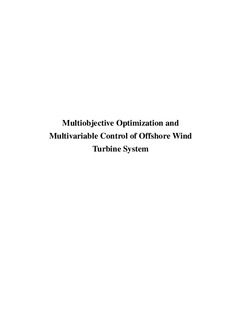| dc.description.abstract | Renewable energy is a hot topic all over the world. Nowadays, there are several sustainable renewable power solutions out there; hydro, wind, solar, wave and biomass to name a few. Most countries have a tendency to want to become greener. According to the European Wind Energy Association (EWEA), the world wide capacity increased with 44.601 [MW] in 2012. From this number, 27 % accounts for new installed wind power, which is the second biggest contributor after solar (37 %). In the past, all new wind parks were installed onshore. During the last decade more and more wind parks were installed offshore, in shallow water (less than 30 [m]). Now, some of the issues related to onshore turbines can be avoided, such as the visual impact, noise and shadow flicker. If one is to speculate about what the future may hold, it is evident that the next step for companies is to install floating wind parks in deeper water (more than 30 [m]). Offshore conditions far from the shore provide with higher and more stable wind conditions. In such deep water, it is no longer economically viable to install bottom-fixed turbines. A solution is to use floating turbine. A floating turbine gives new and interesting challenges to the control community.
This dissertation mainly deals with pitch control of a floating wind turbine. The modeling is also to some extend dealt with, e.g. it is the main topic of paper A. Paper A deals with the bond graph methodology as a graphical approach to model wind turbines. This is an alternative to the more classical Newtonian approach. The purpose is not to validate a specific wind turbine system, but rather explore how the bond graph can contribute with a model and give a better understanding of how the overall system works. The emphasis has not been on the hydro- or aero- dynamics, but rather on the electro-mechanical system. Papers B, C and D are more dedicated to the control of the turbine. The models used for the control purpose are obtained from the wind turbine simulation software FAST (Fatigue, Aerodynamic, Structures and Turbulence). In paper B, several linear models of the turbine are obtained, one model for each 10th azimuth angle. All these models are made continuous based on an affine parameter-varying structure. Using upper bounded inequalities, the parameter dependency is removed from the linear matrix inequality (LMI) representation. Pole placement constraint is also added to the set of LMIs before it is solved for a dynamic H∞ output-feedback controller. Papers C and Dare dealing with static H∞ output-feedback control with constrained information. Constrained information means that not all the available information is used by the controller. There can be different reasons for this, e.g. some of the information is simply not needed, some of the sensors are especially prone to failure, switching between controllers which do not need the same information, etc. Paper C uses a model of the turbine based on a single operating point. Paper D is a direct continuation of paper C. This paper uses a model based on several operating points and a linear parameter-varying (LPV) model is derived. The affine model is parameter-dependent on the wind speed, which is estimated using an extended Kalman filter.
All simulations are carried out using Matlab/Simulink and all LMI calculations are performed using YALMIP interfaced with Matlab. | no_NO |
